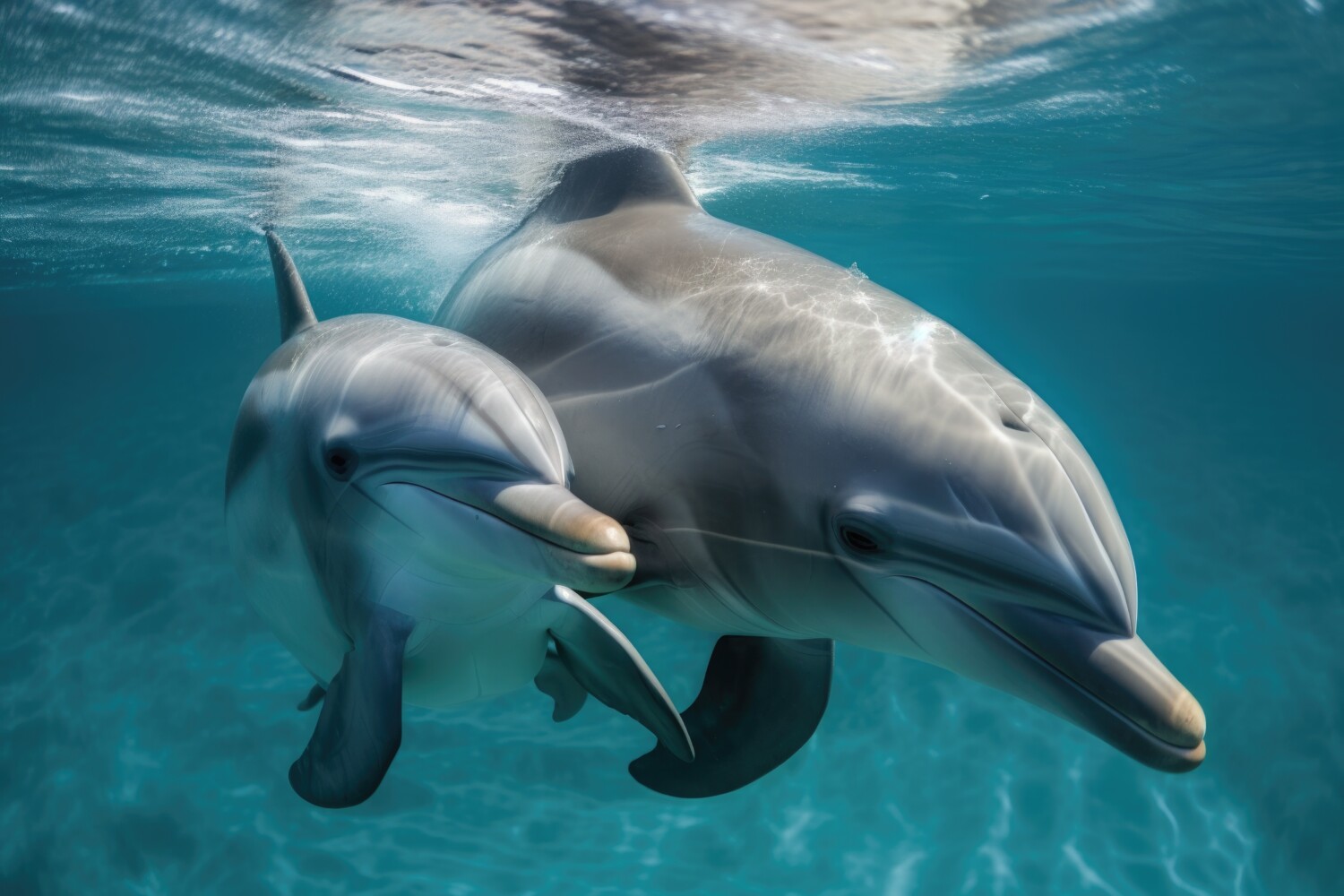Dolphins have long proved that they possess high levels of intelligence through their communication and socialization skills. But recent discoveries by marine biologists highlight a previously unknown similarity between the language of dolphins and humans: Both species use “baby talk” to communicate with their offspring.
A study published in the journal Proceedings of the National Academy of Sciences indicates that bottlenose dolphin mothers adapt their vocal patterns when communicating with their calves. This mirrors how human mothers adjust their tones when talking to their babies.

Experts refer to this style of baby talk as “motherese” — the way mothers shift the tone and pitch of their voices when communicating with their little ones (versus babbling at babies with words such as “baba” for bottle or “wawa” for water).
In other words, it’s often about how we say something rather than what we say, according to the study’s leading marine biologist Laela S. Sayigh.
MORE: Dolphins alerted rescue crew to stranded swimmer
“We’re not changing the words that we’re saying; we’re changing the way that we’re saying them,” she told National Geographic.
According to National Geographic, these specialized ways of communication with babies are rare in the animal world. So far, scientists have found the patterns in squirrel monkeys, rhesus macaques and zebra finches.
Dolphins, known for their intricate system of nonverbal language, seemed like ideal candidates for an offspring vocalization study.
The study began in the 1980s and focused on a group of bottlenose dolphins living in Sarasota Bay, Florida. At the time, scientists already knew dolphins used unique vocal patterns to communicate with one another but wanted to determine if mothers shifted them around their calves.
So, over the course of three decades, researchers recorded the whistles of 19 mother dolphins using a microphone and determined that females produced “signature whistles with higher maximum frequencies when they were recorded with their own dependent calves vs. not with them.”

The researchers expressed excitement over these findings and believe it’s just the beginning of understanding the significance of these connections between the species.
“Our data add to the growing body of evidence that dolphins provide a powerful animal model for studying the evolution of vocal learning and language,” said the study.
This story originally appeared on Simplemost. Check out Simplemost for additional stories.



